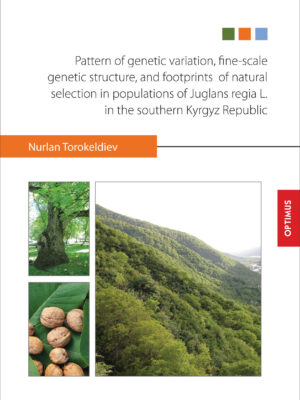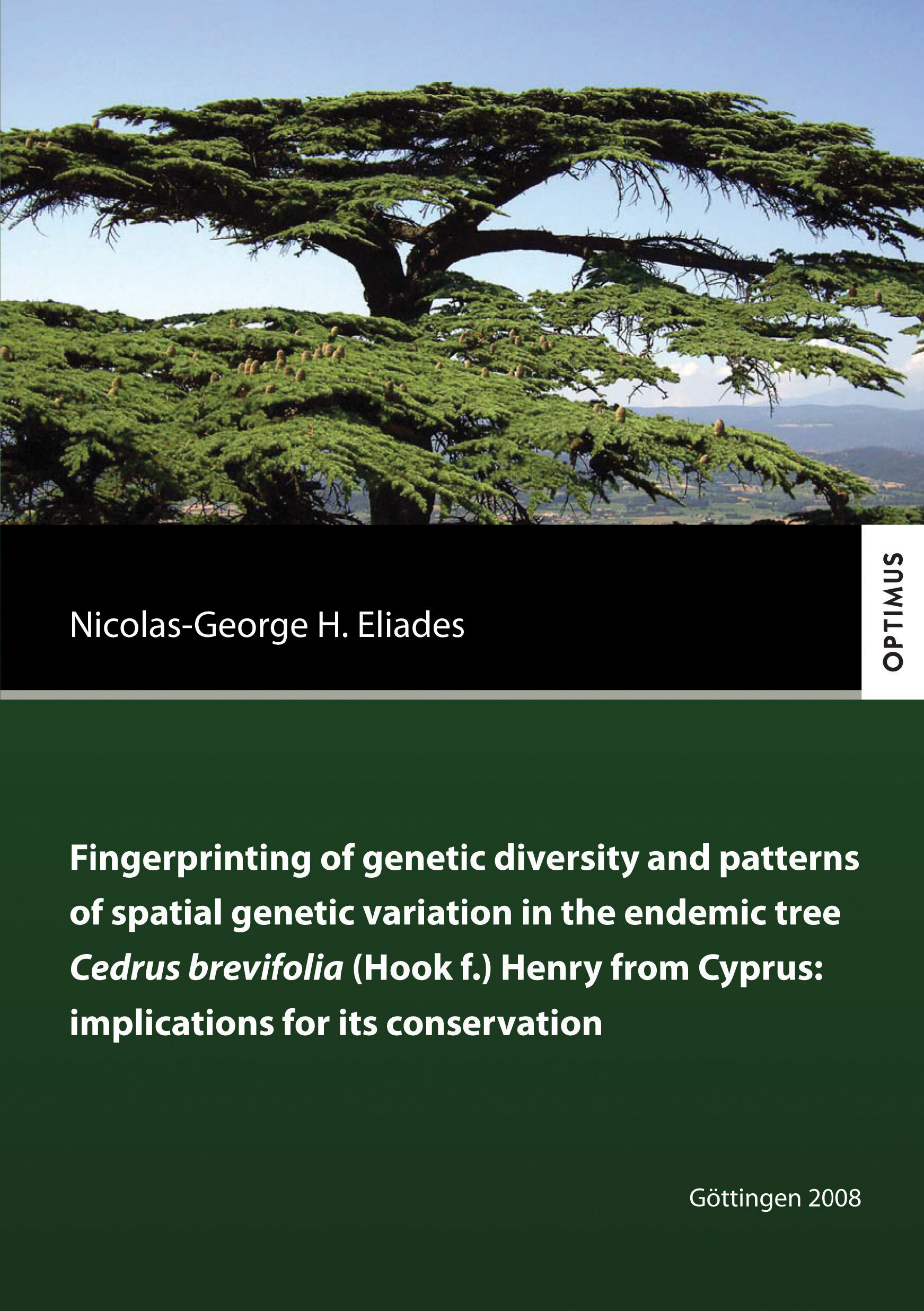Fingerprinting of genetic divesity and patterns of spatial genetic variation in the endemic tree Cedrus brevifolia (Hook f.) Henry from Cyprus
This study examines genetic diversity and spatial structure in the endemic Cyprus cedar (Cedrus brevifolia) using modern molecular fingerprinting across fragmented stands in the Pafos region. It finds unexpectedly high variability with low but significant differentiation among patches, indicating recent fragmentation of a once-continuous population. The results translate into clear conservation guidance on maintaining connectivity, supporting natural regeneration, and safeguarding the species’ evolutionary potential.
36,00 €
inkl. 7 % MwSt. zzgl. Versandkosten
This study provides the first comprehensive molecular ecological assessment of Cedrus brevifolia, the endemic Cyprus cedar restricted to a few fragmented stands in the Pafos forest region. By applying modern fingerprinting techniques, Nicolas G. Eliades examines both the level of genetic diversity and the spatial distribution of variation within and among populations. Contrary to expectations for such a narrowly distributed tree, the results reveal a surprisingly high degree of genetic diversity, indicating that neither past climatic fluctuations nor long periods of isolation have led to severe bottlenecks or founder effects. The effective population size appears to have remained above critical thresholds, preventing the loss of genetic variability that often threatens small, isolated species.
The analysis shows that the existing stands function as subpopulations created by relatively recent fragmentation of a formerly more continuous range. Low but statistically significant differentiation among these patches points to limited gene flow, while clear spatial genetic structure emerges both at broader scales—where geographic and genetic distances are correlated—and at finer scales, reflecting short-distance dispersal dynamics. These findings underline the importance of considering connectivity, dispersal processes, and micro-scale regeneration patterns when planning conservation measures.
By linking population genetics with spatial analysis, the book demonstrates how an endemic tree with a very restricted distribution can maintain considerable evolutionary potential. It highlights practical implications for conservation strategies, from safeguarding existing stands and preventing further fragmentation to enhancing natural regeneration and gene flow. Combining detailed field sampling with robust statistical methods, the work offers valuable insights for forest conservation, biodiversity management, and ecological research in Mediterranean ecosystems and beyond.
| Auflage | 1 |
|---|---|
| EAN | 9783941274068 |
| ISBN | 978-3-941274-06-8 |
| Titel | Fingerprinting of genetic divesity and patterns of spatial genetic variation in the endemic tree Cedrus brevifolia (Hook f.) Henry from Cyprus: implications for its conservation |
| Kurztitel | Fingerprinting of genetic divesity |
| Autor | |
| Organisation | Georg-August Universität Göttingen |
| Erscheinungsjahr | 2008 |
| Verlag | |
| Ort | Göttingen |
| Ausgabeart | Softcover |
| Sprache | englisch |
| Seiten | 161 |
| Medium | Buch |
| Produkttyp | Dissertation |
Herstellerinformationen
Sievers & Partner
Erfurter Str. 10
96450 Coburg
Deutschland (Bayern)
Tel: +49 9561 6754754
E-Mail: info@elitebuch.com
Alle auf dieser Seite angebotenen Produkte entsprechen den geltenden gesetzlichen Vorschriften zur Produktsicherheit gemäß der Verordnung (EU) 2023/988 über die allgemeine Produktsicherheit (GPSR).
OAI-PMH: GetRecord (oai_dc) | GetRecord (oai_datacite)
Das könnte Sie auch interessieren

The cow eats the chameleon
39,90 €
Pattern of genetic variation, fine-scale genetic structure, and footprints of natural selection in populations of Juglans regia L. in the southern Kyrgyz Republic
39,90 €
Welche Wege kann Biomasse gehen?
29,90 €
Non-farm Wage Labour and Entrepreneurship in Rural Vietnam
39,90 €


